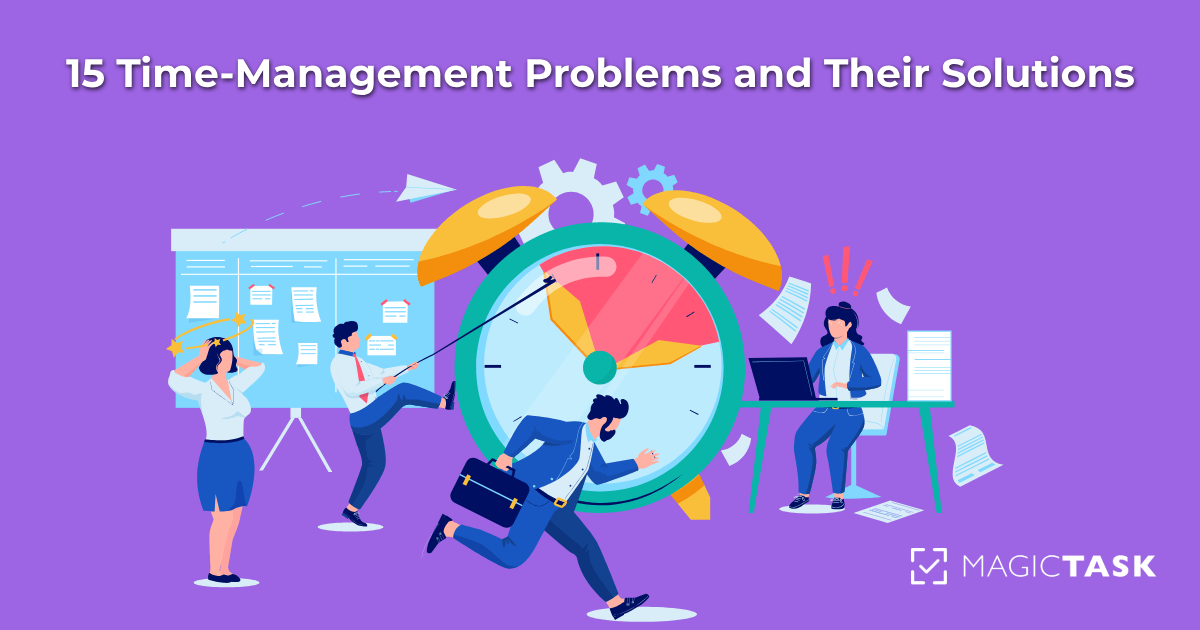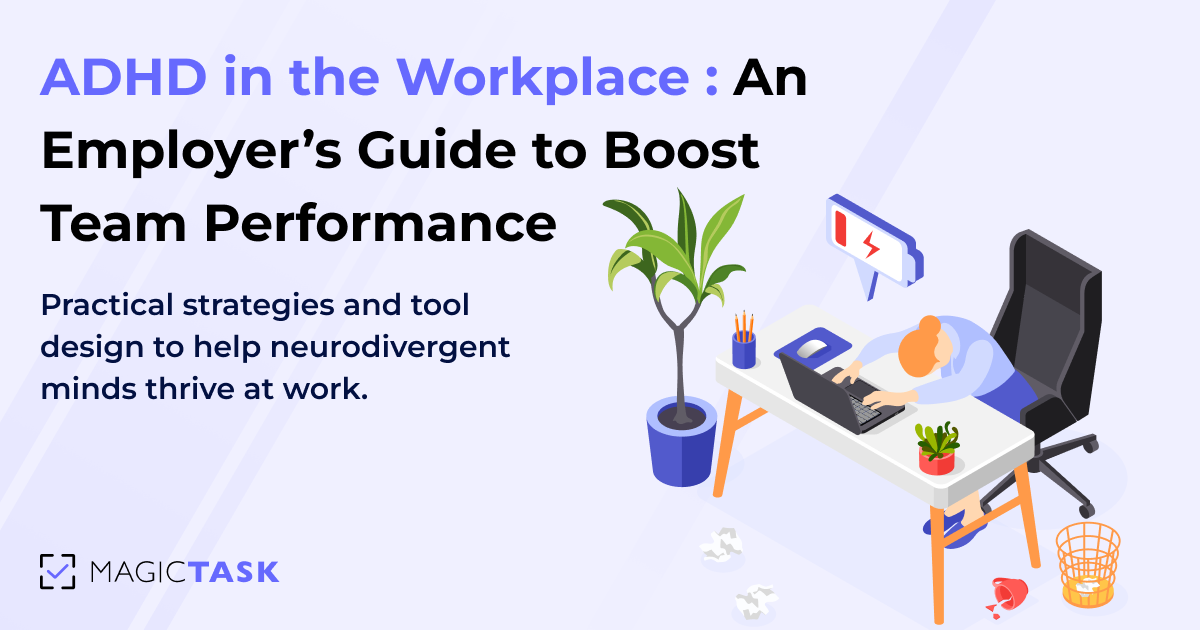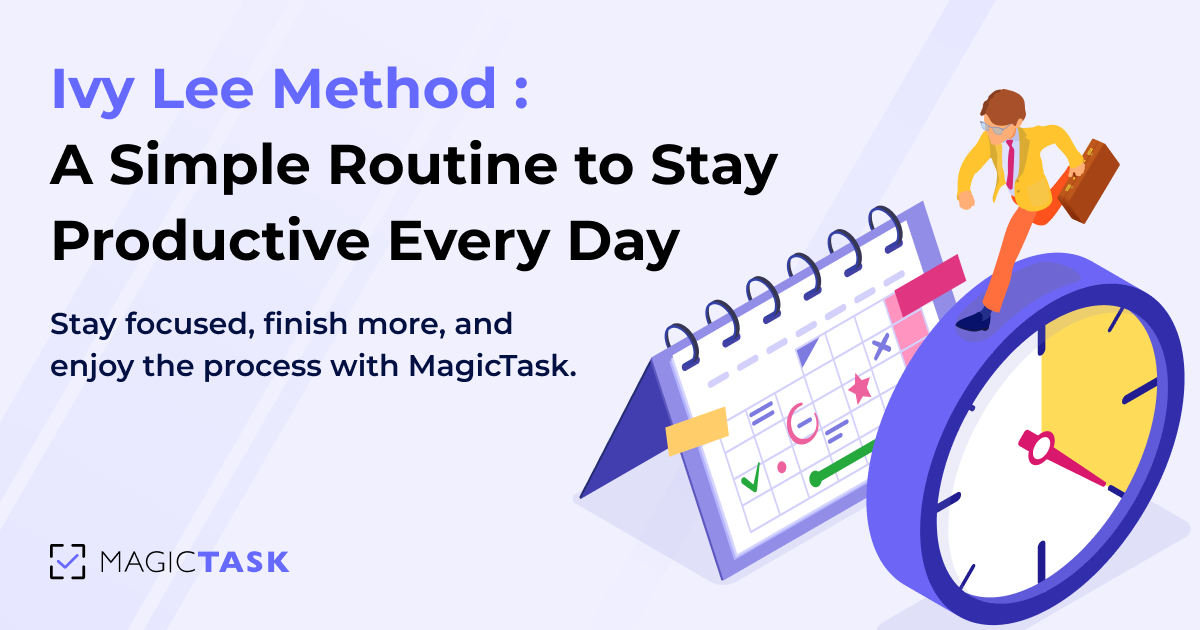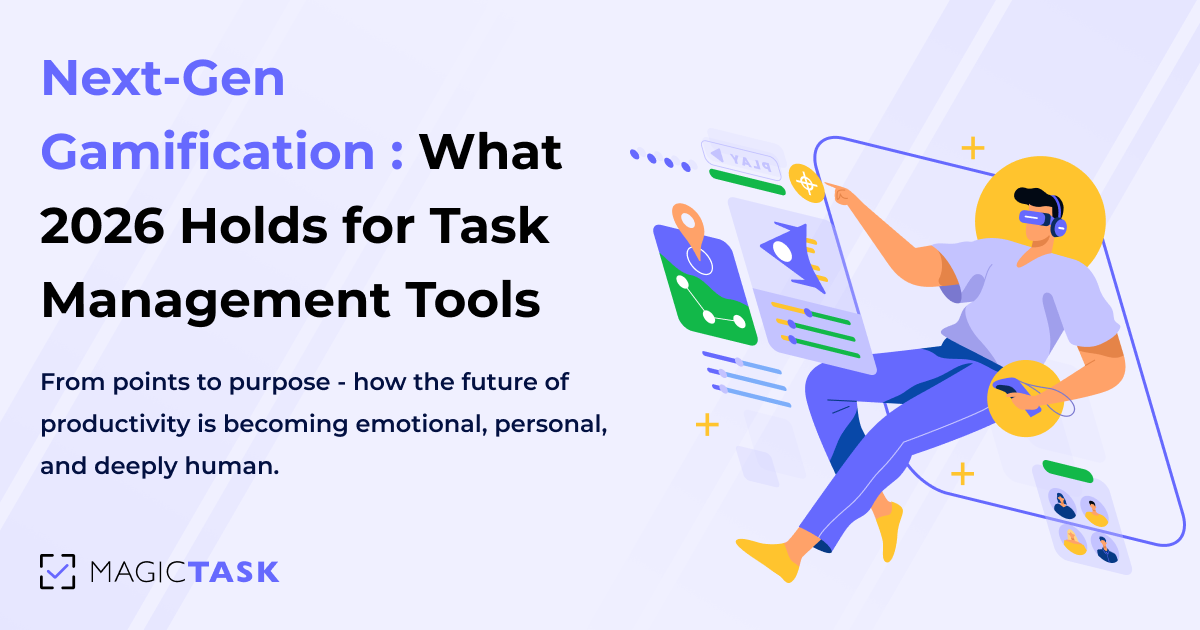15 Time-Management Problems and Their Solutions

Managing time can feel like an uphill battle. Did you know 82% of people don’t use a time management system? It’s no wonder so many of us feel overwhelmed by endless to-do lists and never-ending demands.
But here’s the thing: good time management isn’t about cramming more into your day. It’s about working smarter, creating balance, and focusing on what truly matters.
In this blog, we’ll break down 15 common time-management struggles and share practical, easy-to-apply solutions. Whether you’re trying to keep up with deadlines or carve out time for yourself, these tips will help you take back control of your time—and your life.
Time-Management Problems and Solutions
If you’re struggling with time management, you’re not alone! From endless task lists to procrastination, time management problems can leave you feeling stuck.
Now, let’s take a closer look at what’s holding you back—and how to fix it.
Problem 1: Overwhelming To-Do Lists
Ever looked at your to-do list and felt completely paralyzed? When tasks pile up, it’s easy to lose focus and stress more than getting things done.
Solution?
The key is to simplify. Start by breaking your list into manageable priorities using a system like the Eisenhower Matrix. This approach helps you sort tasks into four categories: urgent and important, important but not urgent, urgent but not necessary, and neither urgent nor essential. You'll feel more in control by tackling the most critical tasks first.
Another tip? Limit yourself to three to five must-do tasks each day. Keeping your list short not only makes it more achievable but also gives you a sense of accomplishment as you check things off. Remember, it’s not about doing everything—it’s about doing the right things.
Problem 2: Procrastination
We’ve all experienced that lingering pull to delay tasks until the last possible moment. Whether it’s because the task feels daunting or you’re distracted by less important activities, procrastination has a sneaky way of derailing your day.
Solution
To combat procrastination, start by breaking large tasks into smaller, manageable pieces. For example, instead of thinking, “I need to finish this entire project,” focus on one specific step, like “Create an outline.” Tackling smaller portions feels less intimidating and helps build momentum.
Pair this with time-blocking—schedule uninterrupted chunks of time for focused work, and stick to those slots. Procrastination loses its grip when you take control of how and when you work.
Problem 3: Constant Interruptions
Interruptions can feel relentless—emails, texts, notifications, or even coworkers dropping by for a “quick question.” These constant distractions disrupt your flow and leave you struggling to refocus, stretching simple tasks into drawn-out marathons.
Solution
Establish boundaries to protect your focus time. Let others know when you’re unavailable, or try using visual cues like a “do not disturb” sign or a status indicator on workplace chat apps.
For personal focus, silence notifications, use productivity tools like MagicTask, and also use website blockers or noise-canceling headphones. Scheduling uninterrupted work blocks during your most productive hours can also make a huge difference. This helps you regain control and preserve your mental energy.
Problem 4: Poor Planning
Without a clear plan, it’s easy to spend more time deciding what to do than actually getting things done. Days that start without direction often end with the frustrating feeling of wasted time.
Solution
The key to better planning is preparation. Before the day begins, spend a few minutes the night before organizing your priorities. Identify the most important tasks and slot them into your schedule. Tools like task managers or digital calendars can simplify this process, giving you a clear roadmap.
Approaching your day with a plan improves productivity and reduces the stress of constantly making decisions on the fly.
Problem 5: Multitasking
Multitasking might seem like the ultimate productivity hack, but it’s often the opposite. Splitting your attention between tasks decreases focus and increases the likelihood of mistakes, making everything take longer.
Solution
Switch to single-tasking. Use the Pomodoro Technique, where you work on one task for 25 minutes without interruption, followed by a short break. This approach keeps your attention laser-focused and helps you work more efficiently.
Another strategy is to group similar tasks to avoid context switching. For example, handle all your emails in one go instead of constantly checking throughout the day. This way, you stay in the zone and maintain momentum.
Problem 6: Lack of Clear Goals
It’s hard to feel productive when you’re unsure what you’re working toward. Without clear goals, you risk spending time on tasks that don’t align with your priorities or long-term plans.
Solution
Set clear, actionable goals using the SMART framework—Specific, Measurable, Achievable, Relevant, and Time-bound. This helps ensure your daily tasks are purposeful and aligned with larger objectives.
For example, instead of saying, “I need to work on my presentation,” reframe it as, “Complete the introduction slides by noon today.” When you’re clear about what success looks like, it’s easier to stay focused and motivated.
Problem 7: Underestimating Time Needed for Tasks
Ever start a task thinking it’ll take just 15 minutes, only to find yourself working on it hours later? Underestimating how long tasks are required can throw off your schedule and lead to rushed, incomplete work.
Solution
The best way to fix this is by practicing time-blocking. Allocate specific blocks of time for each task, being realistic about how long they’ll take. Add a 15–20% extra time buffer for unexpected hiccups or delays.
Over time, you’ll better estimate task durations and can plan your days more accurately, leaving less room for frustration and last-minute scrambles.
Problem 8: Not Delegating
Trying to do everything yourself can feel noble, but it’s a fast track to burnout. When you refuse to delegate, you overload yourself and risk slowing down progress for everyone involved.
Solution
Start by identifying tasks that don’t require your specific expertise or attention. Delegate these to team members who are capable of handling them. Use tools like task managers or shared platforms to track progress and ensure accountability.
Delegation isn’t about relinquishing control but working smarter by focusing your energy where it’s needed most.
Problem 9: Ineffective Prioritization
When everything feels equally important, it’s easy to waste time on low-impact tasks while neglecting what truly matters. Ineffective prioritization can leave you busy but not productive.
Solution
Learn to differentiate between genuinely critical tasks and those that can wait. One practical approach is the 80/20 rule (Pareto Principle), which suggests focusing on the 20% of tasks that deliver 80% of your results.
Another helpful strategy is to review your to-do list at the start of each day and highlight your top three priorities. Tackling these first ensures that the most important work gets done even if your day is interrupted.
Problem 10: Perfectionism
Perfectionism might seem like a strength, but it often leads to endless revisions, missed deadlines, and unnecessary stress. The pursuit of perfection can paralyze progress and make simple tasks take far longer than they should.
Solution
Adopt the mindset that “done is better than perfect.” Set realistic standards for your work and stick to them. If you find yourself overanalyzing or constantly tweaking, ask: “Is this additional effort truly adding value?”
Focusing on progress over perfection can help you complete tasks more efficiently without sacrificing quality.
Problem 11: Lack of Energy Management
Even the best time-management strategies won’t work if you’re trying to push through tasks when your energy is low. Many people overlook the importance of managing their energy, not just their time.
Solution
Pay attention to your natural energy patterns throughout the day. Are you more alert in the morning, or does your focus peak in the afternoon? Schedule high-priority or demanding tasks during these peak energy periods.
For lower-energy times, tackle simpler tasks like responding to emails or organizing files. Pair this with healthy habits—staying hydrated, eating nutritious meals, and taking regular breaks—to maintain steady energy levels.
Problem 12: Forgetting Tasks or Deadlines
Few things are more stressful than realizing you’ve forgotten an important task or deadline. It not only disrupts your workflow but can also damage trust with colleagues or clients.
Solution
Stay on top of your schedule by using digital tools like task management apps or calendar integrations. Set reminders for deadlines and recurring tasks to ensure nothing slips through the cracks.
For larger projects, break them into smaller milestones and set alerts for each step. This keeps you on track and helps prevent last-minute surprises.
Problem 13: Overcommitting
Saying “yes” to too many responsibilities can lead to an overwhelming workload, poor results, and a constant feeling of being stretched too thin. Overcommitting often stems from a fear of disappointing others, which ultimately harms your productivity.
Solution
Learn to say “no” politely but firmly. Before committing to something, take a moment to evaluate whether it aligns with your priorities and if you can handle it.
When you can’t decline, negotiate deadlines or delegate parts of the task to make it more manageable. Protecting your time isn’t selfish—it’s essential for maintaining focus and delivering quality results.
Problem 14: Poor Meeting Management
Unproductive or unnecessary meetings are notorious time-wasters. Without clear objectives, they can drag on, leaving participants feeling frustrated and behind on their work.
Solution
Limit meetings to only what’s essential. Before scheduling one, ask: “Could this be handled through an email or a quick message?” For meetings that are truly necessary, set clear agendas and share them in advance so participants come prepared.
Keep meetings short and focused, with specific outcomes. Consider ending them with a quick recap to ensure everyone leaves with clarity on the next steps.
Problem 15: Burnout and Lack of Breaks
When you’re constantly working without pausing, burnout can sneak up on you. It drains your energy, diminishes focus, and makes you less productive.
Solution
Prioritize regular breaks to recharge both mentally and physically. Use techniques like the Pomodoro Technique to schedule short breaks during work sessions.
Don’t underestimate the value of self-care—whether it’s taking a walk, meditating, or simply stepping away from your desk for a few minutes. Regular downtime helps you maintain your energy and stay productive in the long run.
So, How MagicTask Can Help Solve Time-Management Problems?
While strategies and frameworks are invaluable, the right tools can make all the difference in streamlining your time management. That’s where MagicTask steps in. Designed to tackle common productivity challenges, MagicTask simplifies your workflow, boosts efficiency, and helps you stay on top of your game.
Here’s how MagicTask can transform the way you manage your time:
1. Effortless Task Management
MagicTask streamlines the way you handle tasks, making it easy to create, organize, and prioritize your workload. Its clean, intuitive interface removes unnecessary complexity, so you can focus on what matters most.
- Add tasks quickly and categorize them for better organization.
- Assign deadlines and priorities without feeling bogged down by complicated options.
This simplicity ensures that managing your to-do list doesn’t feel like yet another task on your plate.
2. Gamified Productivity
One of MagicTask’s standout features is its gamification system, designed to make task management engaging and fun. Completing tasks unlocks themes, animations, and sound effects, turning your daily routine into a rewarding experience.
- Level up as you complete tasks and unlock new visual elements.
- Personalize your workspace with dynamic themes, keeping things fresh and motivating.
By adding an element of play, MagicTask transforms mundane chores into opportunities for achievement.
3. Collaborative Capabilities for Teams
For those working in teams, MagicTask offers real-time collaboration features that make group projects seamless. Everyone stays in sync, with updates and changes reflected instantly.
- Assign tasks to team members with clear priorities and deadlines.
- Monitor progress to ensure accountability and keep the project moving forward.
This makes it easier to delegate effectively and ensures everyone knows their role.
4. Customization and Personalization
MagicTask lets you adapt your workspace to fit your style and needs. Its customizable features ensure that your task management process feels uniquely yours.
- Organize projects into separate workspaces to maintain clarity.
- Use themes to create a workspace that inspires and energizes you.
This level of personalization makes MagicTask more than a tool—it becomes an extension of how you work best.
Ready to experience the future of task management? Sign up now and transform the way you work.
Conclusion
Managing time effectively can feel overwhelming, but the right strategies and tools can simplify it. By addressing common challenges—like procrastination, poor planning, and burnout—you can reclaim control over your day and focus on what truly matters.
MagicTask offers a fresh, innovative approach to task management, turning daily responsibilities into an engaging, streamlined experience. It’s not just about getting things done—it’s about enjoying the process along the way.
Similar Blogs
FAQS?Have questions? Look here
MagicTask simplifies task management with an intuitive interface, allowing you to create, organize, and prioritize tasks easily. Its gamified system adds a fun and engaging twist to staying productive.
Yes! MagicTask offers real-time collaboration features, enabling you to assign tasks, set priorities, and track progress, ensuring everyone stays on the same page.
MagicTask combines simplicity with gamification, turning task completion into an engaging experience. Its customizable features and collaborative capabilities make it versatile for both individuals and teams.
Absolutely! MagicTask encourages focused work by letting you organize tasks into categories and workspaces, so you can concentrate on one thing at a time without distractions.




